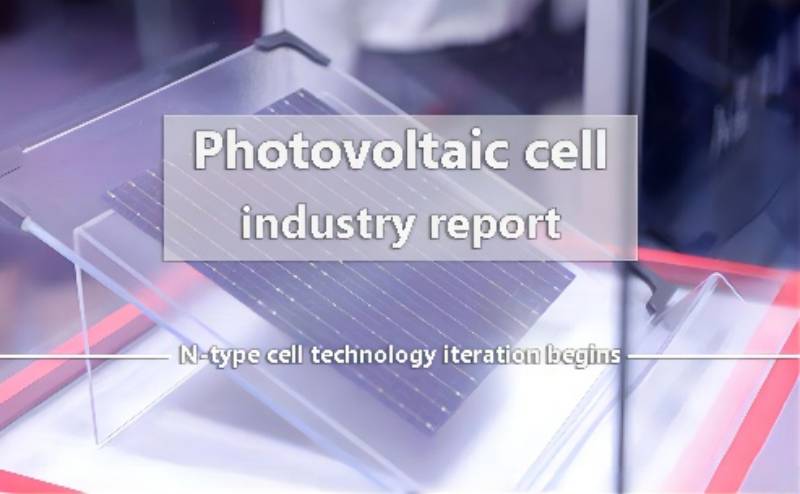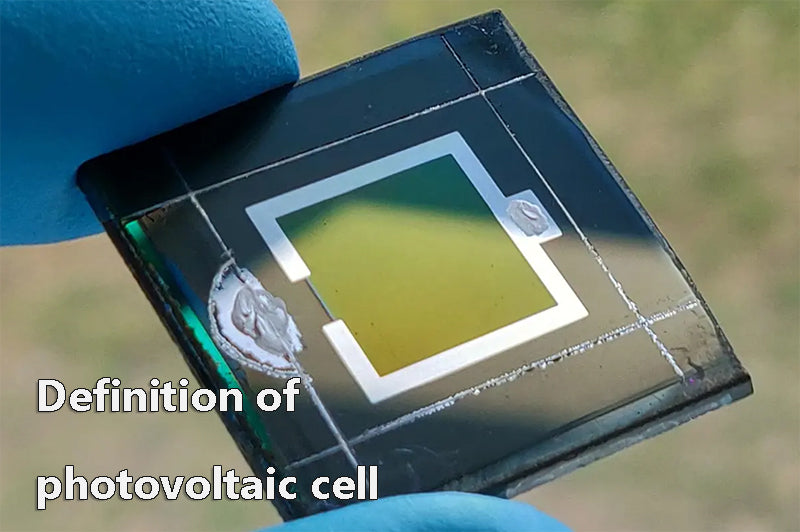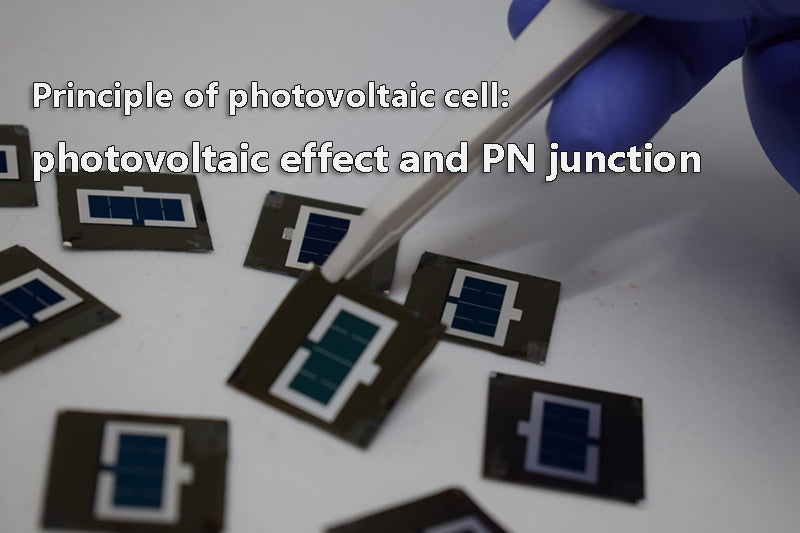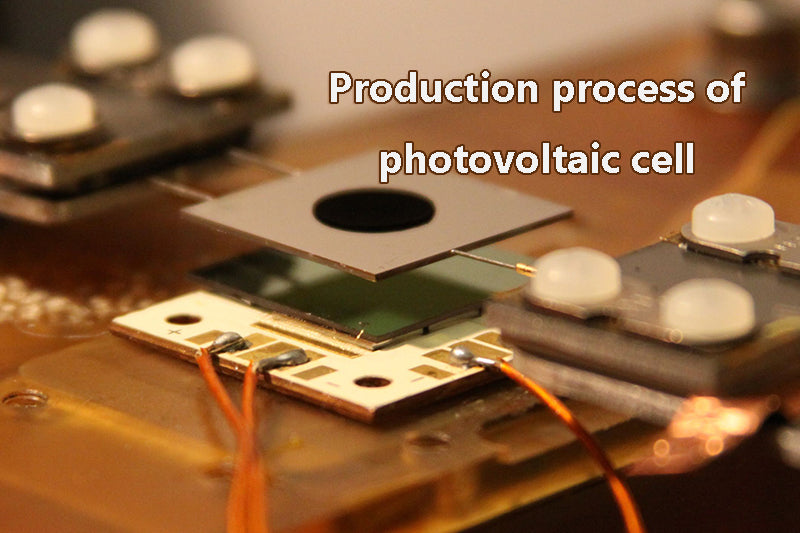
Main content:
With the acceleration of the global carbon neutrality process, the cost of superimposed photovoltaic power generation continues to decline, the economy continues to improve, and the high growth of photovoltaic installed demand is highly certain. This article will focus on the fastest technological iteration speed of photovoltaic cell in the photovoltaic industry chain. If you want to know detailed information about photovoltaic battery, please read the article top 10 photovoltaic battery companies in the world in 2022.
1. Definition of photovoltaic cell
Photovoltaic cell is the core components of photovoltaic power generation, and the technical route and process level of photovoltaic cell directly affect the power generation efficiency and service life of photovoltaic system. Photovoltaic cell is located in the middle reaches of the photovoltaic industry chain. Photovoltaic cells are semiconductor wafers that can convert solar light energy into electricity by processing single or polysilicon wafers.

From the perspective of the necessity of photovoltaic cell, the principle of photovoltaic power generation comes from the photoelectric effect of semiconductor, through the light of uneven semiconductor or semiconductor and metal binding between different parts of the potential difference, is from the photon (optical wave) into electron, light energy into electric energy after forming voltage and current process.
The silicon wafers produced by the upstream link cannot conduct electricity, and the photovoltaic cells obtained after processing determine the power generation capacity of the photovoltaic modules. From the perspective of the importance of photovoltaic cell, power generation efficiency and service life are the core parameters of the value of photovoltaic modules:
● The conversion efficiency of photovoltaic cell is the ratio of the maximum output power to the incident light power when exposed to light, and it is the core factor that directly affects the power generation efficiency of photovoltaic modules and even the whole photovoltaic power generation system. More highly efficient cells have a higher output power, and the overall power of the photovoltaic modules formed by their packaging will also be higher;
● Defects of photovoltaic cell production process often lead to single cell resistance uneven and easily produce hot spot phenomenon. The hot spot effect refers to the single cell covered by small objects, causing the current smaller, become a load, light burned photovoltaic cell, serious can cause the combustion of the whole cell components, the service life of components is very big. From this dimension, the production process level of photovoltaic cell directly affects the service life of photovoltaic modules.
The upstream of photovoltaic cell mainly includes raw material silicon wafer and core auxiliary material silver slurry. From the upstream of the photovoltaic cell industry chain, the main raw material of photovoltaic cell is silicon wafer, and the main auxiliary materials are silver pulp, aluminum pulp and chemical reagents, and the main power is electricity.
Downstream of the photovoltaic cell are the photovoltaic module manufacturers. From the perspective of the downstream of the photovoltaic cell industry chain, photovoltaic cell is mainly jointly packaged with photovoltaic glass, other packaging materials (backplane, EVA film, etc.) to form solar cell modules. And then the modules, inverter and bracket will work together to form the photovoltaic power station power generation system.
2. Principle of photovoltaic cell: photovoltaic effect and PN junction
Solar batteries work on the principle of photovoltaic volt effect and PN junction. Photogenerated volt effect refers to an effect in which the charge distribution state of the electromotive force and current in the object change when the object is exposed to light. This effect is the principle of photovoltaic power generation. The basic structure of photovoltaic cell is made by using P-type and N-type semiconductor bonding. The most basic material of the semiconductor is "silicon".

Pure silicon is not conductive, but the molecular structure can be changed by doping in the silicon. Photovoltaic cell generation is using P-type semiconductor has a hole (P-type semiconductor less a anode charge electron, can be regarded as more than a cathode charge). And N-type semiconductor more than a free electron potential difference to produce current.
When the sun shines on the PN junction of the semiconductor, the light voltage will appear on both sides of the PN junction, and then the electrons in the silicon atoms to produce the convection of electrons and electrons and holes, which are affected by the built-in electric field, are attracted by N-type and P-type semiconductors respectively, and gather at both ends. In this case, the external ends of the cell are connected with electrodes to form a loop that can generate a current current, which is the principle of solar cells generating electricity. If you want to learn more about, you also can read the article top 5 perovskite solar cell companies in China in 2022.
3. Classification of photovoltaic cell
In terms of substrate types, photovoltaic cells can be divided into P-type cells and N-type cells. The raw material of P-type cell is P-type silicon wafer (doped boron), and the raw material of N-type cell is N-type silicon wafer (doped phosphorus). P-type batteries mainly include BSF and PERC; N-type batteries are currently more mainstream technologies using TOPCon and HJT. The N-type battery is electrically conductive, and the boron-oxygen atoms cause less photoinduced attenuation, so the photoelectric conversion efficiency is higher.

From the principle of efficiency enhancement, the battery technology can be divided into two categories: reducing electrical loss and reducing optical loss. In order to reduce the optical loss, the reflective layer can be added (SiNx deposition principle), the light trapping layer (pile making principle), or the front metal gate line can be placed on the back (IBC cell principle). In order to reduce the electrical loss, field passivation or chemical passivation can be performed.
4. Production process of photovoltaic cell
The production of traditional photovoltaic cell can be mainly summarized in six steps:
● Cleaning and velvet, the main purpose is to remove all kinds of contaminants adsorbed on the surface of silicon chip, remove the surface of silicon chip cutting damage layer. Using the principle of trapping light to reduce the reflectance of the battery surface. The uneven surface can increase the secondary reflection, change the optical path and incident mode, increase the absorption of light, improve the short-circuit current, and then improve the conversion efficiency of the battery.
● Diffusion, the main purpose is to form the PN junction, this link is the heart of the cell manufacturing, so that the cell has the function.
● Etching (dephosphorized silicon glass). In the diffusion process, the side and back edges of the silicon wafer are not shielded, and phosphorus will also be diffused. The photogenerated electrons collected from the front of the PN junction will flow to the back of the PN junction along the area with phosphorus diffusing on the edge, thus causing a short circuit and making the cell fail.

● Plating film, mainly play a dereflection effect and passivation effect. Common plating film technologies in photovoltaic cell include PECVD, LPCVD, PVD, ALD and so on.
● Screen printing, the main role is to collect current for solar cells and make electrodes, including the first back silver electrode, the second back aluminum back field printing and drying, the third front silver electrode printing.
● Sintering, that is, the electrode printed to the surface of the cell is placed at high temperature sintering, so that the electrode and the silicon plate itself form an Ohmic contact, improve the open-circuit voltage and filling factor of cell, so that the electrode contact has resistance characteristics to achieve high conversion efficiency.
5. The development trend of photovoltaic cell
China's photovoltaic cell production has maintained rapid growth in the past decade, with CAGR reaching 33.5%. According to the CPIA forecast, China's photovoltaic cell production will exceed 261GW in 2022. PERC batteries have been upgraded from traditional aluminum back field batteries, with higher photoelectric conversion efficiency compared with BSF cells.
Because the composite speed of the metal aluminum film layer on the back surface can not be reduced to less than 200cm / s, only 60%~70% of the infrared radiation light reaching the aluminum back layer can be reflected, producing more photoelectric loss, so it has inherent limitations in terms of photoelectric conversion efficiency.
The PERC technology attaches the medium passivation layer to the back of the cell, and uses the back point contact to replace the whole all-aluminum back field, which can greatly reduce this photoelectric loss, and thus improve the photoelectric conversion efficiency of photovoltaic cell by about 1%. PERC production efficiency improved year by year, the highest efficiency reached 24.06%. From the perspective of single crystal and polycrystalline cells, the efficiency of PERC single crystal cells is always higher than that of PERC polycrystalline cells. PERC battery production capacity continues to climb, the market share is far ahead of the mainstream.

According to CPIA, BSF batteries were the mainstream product by 2015, with a 90% market share. Since 2016, the market share of BSF cells has decreased significantly, from 87.8% in 2016 to 5% in 2021. The main reason is that BSF cells have innate limitations and large photoelectric loss, and the increasing demand of downstream customers for high-efficiency photovoltaic cell has gradually eliminated BSF. During the same period, the market share of PERC battery showed a significant increase trend, climbing from 10.0% in 2016 to 91.2% in 2021, which has now become the mainstream product of photovoltaic cell.
The N-type battery has obvious advantages in conversion efficiency, and will become the direction of the next generation of technology. P-type batteries are close to the conversion efficiency limit and are difficult to develop further. Compared with P-type photovoltaic cell, N-type photovoltaic cell has advantages in many aspects. The conversion efficiency of N-type cells is higher, and it will become the mainstream technology of photovoltaic cell in the future.
According to CPIA statistics, in 2021, large-scale produced P-type single-crystal cells adopted PERC technology, the average conversion efficiency reached 23.1%, the conversion efficiency of polycrystalline black silicon cells using PERC technology reached 21.0%. The average conversion efficiency of N-type TOPCon cells reached 24.0%, and that of HJT cells reached 24.2% compared with 2020, and the average conversion efficiency of IBC cells reached 24.1%.
In the future, with the reduction of production cost and the improvement of yield, N-type battery will be one of the main development directions of battery technology.
Related articles: lithium ion solar battery, top 5 home energy storage companies